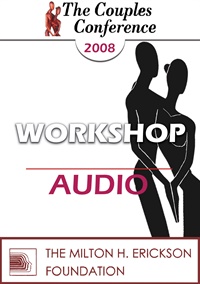CC08 Workshop 14 - Addiction to “Alone Time”: Avoidant Attachment, Narcissism, and a One-Person Psychology within a Two-Person Psychological System - Stan Tatkin, PsyD
- Average Rating:
- Not yet rated
- Topic Areas:
- Workshops | Addiction | Attachment | Couples Therapy | Personality Disorders | Avoidant | Psychobiological Approach to Couples Therapy (PACT)
- Categories:
- Couples Conference | Couples Conference 2008 | Pioneers in Couples and Family Therapy
- Faculty:
- Stan Tatkin, PsyD, MFT
- Duration:
- 2:24:28
- Format:
- Audio Only
- Original Program Date:
- Apr 27, 2008
- License:
- Never Expires.
Description
Description: Avoidant attachment can resemble disorders of the self, such as narcissistic or schizoid presentations, where partners rely heavily on auto-regulation and disengage from mutual emotional attunement. This workshop examines how such dynamics play out in romantic relationships, offering practical strategies—like proximity-based interventions and structured dyadic exercises—to support co-regulation and foster secure relating.
Syllabus Description: Comparisons have been made between severe avoidant attachment and disorders of the self such as antisocial personality, schizoid personality, and narcissistic personality. Each of these disorders, including avoidant attachment, can be grouped together as one-person psychological organizations in that they operate outside of a truly interactive dyadic system, and primarily rely upon themselves for stimulation and calming via auto-regulation. The chronic need for “alone time” can take many surprising forms throughout the lifespan, directly impacting romantic relationships.
Educational Objectives:
- To describe an appropriate intervention for keeping an avoidant patient in treatment.
- To identify physical approach and avoidance behaviors that often accompany attachment organization.
*Sessions may be edited for content and to preserve confidentiality*
Credits
Handouts
| Ericksonian Learning Snapshot (249.7 KB) | 2 Pages | Available after Purchase |
Faculty

Stan Tatkin, PsyD, MFT Related Seminars and Products
Stan Tatkin, PsyD, MFT, is a clinician, researcher, teacher, and developer of A Psychobiological Approach to Couple Therapy (PACT®). He has a clinical practice in Calabasas, CA, where he has specialized for the last 15 years in working with couples and individuals who wish to be in relationships. He and his wife, Tracey Boldemann-Tatkin, developed the PACT Institute for the purpose of training other psychotherapists to use this method in their clinical practice.


